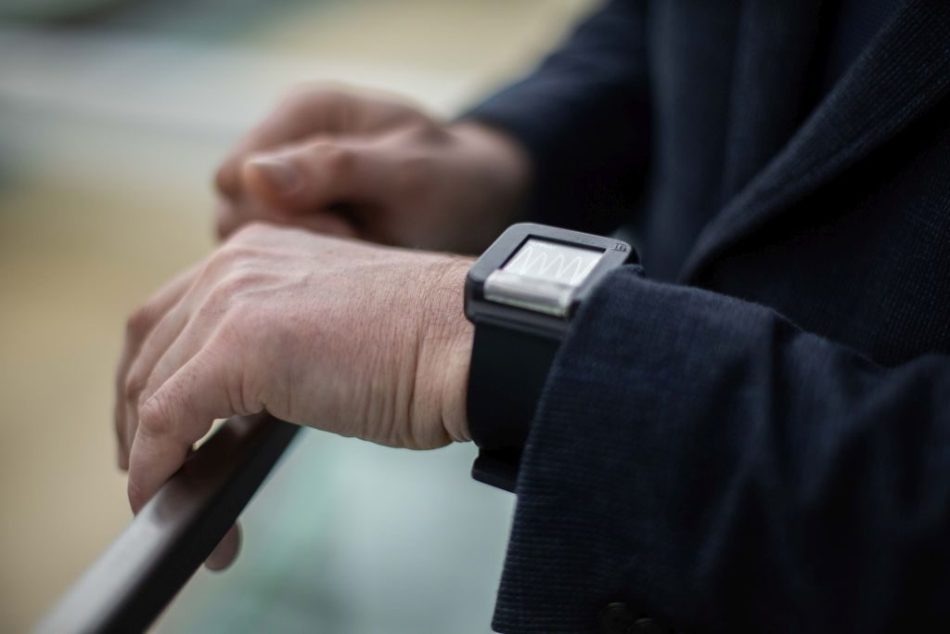Mar 27 2019
Although smart wristbands are widespread fashion accessories for tracking heart rate and physical activity, they are generally not advanced enough to deliver specific and accurate information regarding potential health issues of the wearer. Kaunas University of Technology (KTU) scientists are designing a smart wrist-worn device for tracking of atrial fibrillation—a condition, which if left untreated can cause critical health problems and even death.
 Image credit: Kaunas University of Technology
Image credit: Kaunas University of Technology
Based on the data made available by the US government, atrial fibrillation is the most universal type of heart arrhythmia. Approximately 9% of people who are 65 years or older have atrial fibrillation; it is estimated that because of the quickly aging society, the frequency of the disease in the global population will grow three-fold in the following 30 years.
When arrhythmia starts to develop, the episodes are typically short and self-terminating thus may stay undetected. If untreated, atrial fibrillation can add to the development of critical complications, such as brain stroke.
Atrial fibrillation can often develop after heart attack, thus these patients need certain medical care and attention to prevent from serious health complications. However, after leaving the hospital their health check-ups are only episodic. Non-invasive, compact wearable devices, which are providing continuous monitoring is an attractive solution for monitoring the health status of such high-risk groups.
Vaidotas Marozas, Director, Biomedical Engineering Institute (BEI), KTU.
Researchers from KTU BEI, led by Dr Marozas are building a multisensory system, i.e. the wrist-worn device for atrial fibrillation monitoring. Two kinds of modalities are being used in the device—photoplethysmographic (PPG) for nonstop monitoring and electrocardiographic (ECG) for the attainment of a control signal. When PPG sensor records the heart activity similar to atrial fibrillation, the device pulsates mildly, asking the patient to touch the device with the other hand so as to register a short ECG signal.
The quality of vital signals obtained in real life is worse than those documented under clinical settings. Thus, nonstop monitoring—or the remote observation of patients—is only made viable through superior-quality data. According to Dr Marozas, one of the key difficulties in the creation of the wearable monitoring units is modern signal processing solutions which would isolate beneficial information from the “noise” i.e. motion artefacts and other types of arrhythmia. The biomedical engineers of KTU are working along with the international team of physicians and health researchers from Kaunas University of Health Sciences, Vilnius University, Lund University, and industrial designers from Vilnius Academy of Arts.
We are focusing on developing technologies, which are needed for the public and contemporary medicine. For example, due to the prevalence of this condition, every person older than 65 should be checked for atrial fibrillation. However, relying on the short-term clinical ECG, the arrhythmia can be detected only if the condition is chronic. What if the episodes are occurring only occasionally? Then our technology is very useful.
Vaidotas Marozas, Director, Biomedical Engineering Institute (BEI), KTU.
He assures that regardless of complicated technology and advanced algorithms the smart wrist-worn device is very user-friendly. It is targeted at seniors—people, who are particularly self-conscious when using smart devices and technologies.
Now, the team is involved in incorporating more functions to the technology, such as executing the algorithm of tracking the heart’s response to physical load. Slow heart’s adaptation to physical load is associated with increased mortality rate and danger of cardiovascular disease, thus tracking of this parameter could be advantageous for all age groups.
The patent application for the smart wrist-worn device has been sent to the Lithuanian State Patent Bureau at the end of 2018. The KTU BEI researchers are getting international applications ready for two other inventions.
KTU Biomedical Engineering Institute is focusing on the progress of non-standard electronic systems for tracking human health parameters; typically for research purposes. Along with local and global partners, the KTU scientists have executed a number of groundbreaking solutions under the concept of “wearable health”, such as a multisensory system for hemodialysis, smart T-shirt, and monitoring system for divers, used in military training.
This research was supported in part by the Research Council of Lithuania (project AFterStroke, Agreement No. S-MIP-17/81).